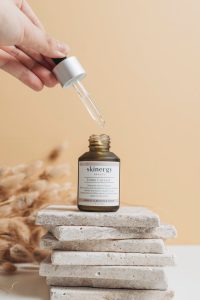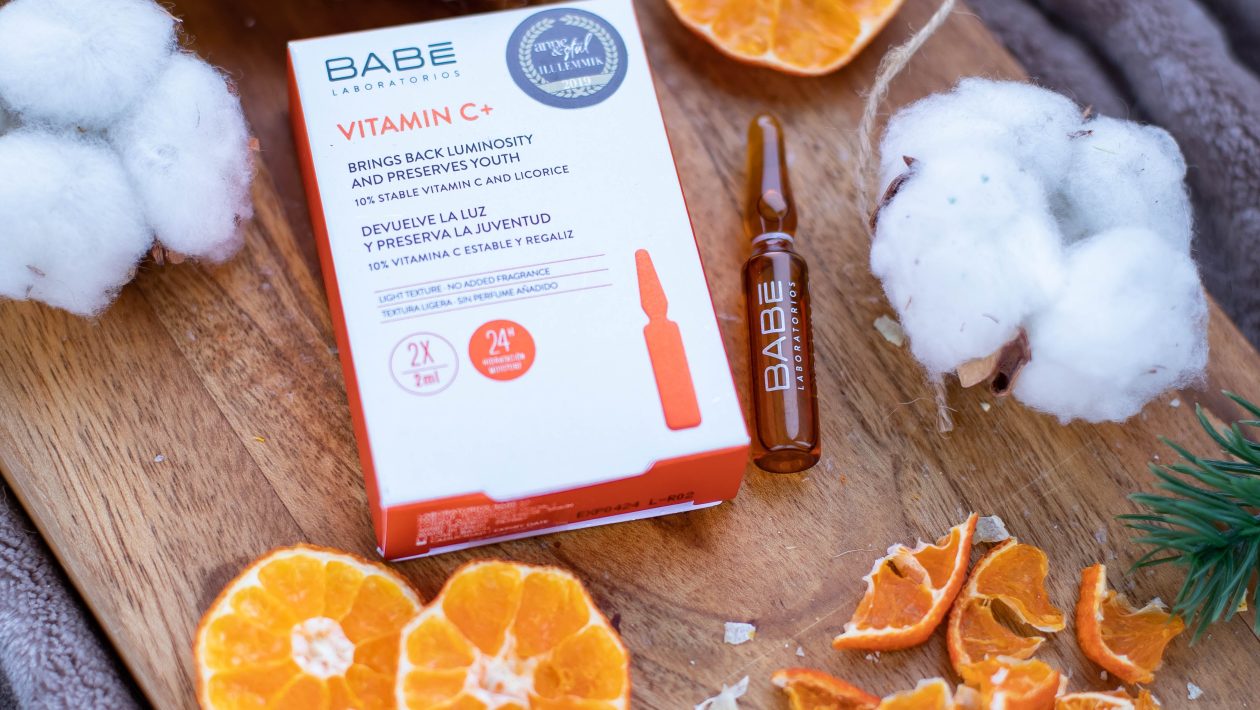Having radiant and spotless skin is every girl’s dream. But if you love to spend time outdoors, dullness and dark spots are inevitable. Are you searching for a skin-care duo that will solve all your skin-related issues? Two of the best ingredients to make your skin glow again are glycolic acid and vitamin C.
How can vitamin C and glycolic acid benefit your skin? Can you use these two ingredients together for best results? Dive deep into the realm of skincare to know everything about mixing vitamin C with glycolic acid.
Table of Contents
Why should you know if glycolic acid and vitamin C can go together?
Choosing the right products for your skin can be confusing. With so many brands designing hundreds of beauty products, how do you know which one’s best for you?
What most people do is find out by trial and error. An error can often cause irritated or damaged skin. This happens because some products end up mixing things that aren’t supposed to be together. So, they can worsen your skin. That explains why it’s important to educate yourself before mixing glycolic acid and vitamin C.
What type of acid is glycolic and how does it work?
Like tartaric acid, malic acid, acetic acid, citric acid, and lactic acid, glycolic acid is a type of AHA (alpha-hydroxy acid). Its chief sources are sugarcane, beets, grapes, and pineapple. It commonly features in a range of skin-care products, especially for its exfoliating properties.
Why is glycolic acid a popular ingredient in skincare products?
Glycolic acid’s best qualities are its water solubility and molecular size. But how do these properties transition into noticeable benefits? Glycolic acid can do the following things:
Prevent breakouts
The antibacterial properties of glycolic acid are not unknown. It can stop Propionibacterium acnes, the bacteria responsible for causing blemishes. It unclogs the pores to give you clear skin, devoid of pimples.
Better skin texture
The main reason why skin specialists advise you to exfoliate your skin is that it eliminates dead skin cells. What can be a better exfoliant than glycolic acid?
When you use a glycolic acid cleanser, your skin will renew itself at a quicker pace than it naturally does. So, the outcome will be soft, firm, and smooth skin. Your skin tone will become even and the wrinkles and fine lines will be less prominent than before.
Keep your skin hydrated
Glycolic acid is water-soluble, which is why it will treat dry skin. It can keep your skin hydrated without making it oily. So, there will always be a fresh, dewy look on your face.
Reduce hyperpigmentation
Dark spots are stubborn and no matter what you do, they don’t disappear. Truth be told, you can apply nothing to remove dark spots entirely. However, with glycolic acid, they will fade to a great extent.
But can you use glycolic acid and vitamin C together? Stay tuned to acquire the necessary information about it.

How does Vitamin C work?
Vitamin C, a water-soluble nutrient, will top the list of skin-care powerhouses. Being an antioxidant, it fights the harm done by free radicles.
It forms a part of your skin, in the epidermis and dermis. The highest levels of it are present in the epidermis, especially because it supports and protects the skin.
With age, vitamin C’s natural levels in the human body begin to decline. The sun is another factor that speeds up the degradation of vitamin C. So, people who remain under the sun for long hours have lower levels of vitamin C. Now, understand the most crucial role of this vitamin.
Collagen, a natural protein produced in the body, makes the skin plump and firm. It is one of the key things that impact if your skin looks old or young. But with age, the body can’t produce as much collagen as your skin needs. The outcome is sagging skin. Hence, keeping as much collagen as possible should be one of your self-care goals in your 40s. This is where vitamin C comes to your rescue.
Vitamin C impacts the production of collagen as it’s a regulatory factor in the process of synthesis. It also plays a part in binding the collagen together once it’s produced. Vitamin C is necessary to make your skin glow from within. So, can you mix glycolic acid and vitamin C? First, understand why you must feed vitamin C to your skin.
The advantages of using Vitamin C
Antioxidants are beneficial not just for your skin but your whole body. Citrus fruits are loaded with vitamin C and they form an essential part of your diet.
It boosts immunity, treats cough and cold, prevents scurvy, combats cancer, cures cataracts, lessens hypertension, and reduces the chances of UTIs and strokes.
But why does your skin need vitamin C? Its molecular structure is such that it can enter deep into your skin and address a range of skin concerns.
Protects against damage from the sun
UVB and UVA rays of the sun can cause severe damage to your skin. While vitamin C cannot block sunrays as perfectly as your sunscreen, it still offers some protection.
It shields your skin and minimizes the damage done by any rays that penetrate your sunscreen. It staves off the UV rays’ premature aging effect. So, team it up with your regular sunscreen and you’ll have the ultimate sun protection duo.
Conceals signs of aging
It is not a coincidence that vitamin C is present in many anti-aging creams and serums. It effectively combats aging which you will notice over a few months. Use it consistently and the fine lines and wrinkles will become less visible. Vitamin C will also make your skin baby-soft and plump.

Has skin-hydrating properties
Hydration is compulsory to keep your skin healthy and happy. Vitamin C increases your skin’s ability to hold moisture. It will leave your skin bright and well-hydrated. So, with a dose of vitamin C, you can bid adieu to lackluster and dry skin.
Reduces inflammation
What should you do when your skin is red and itchy? Vitamin C also treats irritated skin, thanks to its anti-inflammatory qualities. It will instantly calm and soothe your inflamed skin, providing comfort and relief. So, many ointments and creams for sensitive skin have vitamin C.
Boosts the production of collagen
Although collagen is naturally present in the skin, it degrades as you grow old. Unfortunately, the amount of collagen your skin produces when you are in your 40s or 50s is not enough. So, you must nourish your skin with ingredients that will increase the production of collagen.
Vitamin C assists in collagen production, and enhances your skin’s elasticity. Your skin will become so bouncy and supple that your partner won’t be able to stop touching it.
Tips to use vitamin C and glycolic acid together
As glycolic acid and vitamin C are excellent for the skin, many people wonder if they can use both. So, is there a way to successfully mix these two without any adverse effects? The good thing is that you can incorporate the skin-transforming properties of both into your skin-care regime.
The world’s leading dermatologists have shared the trick to use glycolic acid with vitamin C. You must always begin your evening beauty regime with glycolic acid. The first thing that you apply to your face after returning home is a face wash. So, the easiest way to use glycolic acid is by opting for a cleanser that contains glycolic acid.
You can also use glycolic acid pads. There are pads that utilize two alpha-hydroxy acids, namely lactic acid and glycolic acid. Some even include salicylic acid (a beta-hydroxy acid) to penetrate deep into your pores. Hence, once you apply the pad, it does a fantastic job of removing dead cells. You simply have to swipe the pad across your entire face without bringing it in contact with your eyes.
The glycolic acid pad or cleanser will do its job and you will have a clean face and open pores. Now it is time to allow vitamin C to do its magic. Look for a cream that has at least 10% L-ascorbic acid for quick results. When applied on dry and clear skin, vitamin C will reach deeper layers of your skin. It won’t have to make its way through numerous dead cells.
If you follow the above-mentioned tips, you are bound to notice a difference within a few days. You will feel fabulous each time you look in the mirror and there will be no skin irritation. Everyone will be keen to know the secret behind your natural glow.

Which will go first?
As it’s an acid, glycolic acid will alter the pH levels of your skin. So, it is better to use glycolic acid first to avoid reactions. It will create the optimal conditions so that your skin can absorb vitamin C. Glycolic acid will allow vitamin C to get into the epidermis, thus improving your complexion.
Can you apply vitamin C after applying glycolic acid?
As a rule of thumb, you should always give your skin some time to breathe after applying one product. So, wait for at least 15 minutes after you wash your face with a glycolic acid face wash or use a glycolic acid toner. The pH balance will return to normal in some time. After that you can proceed with applying vitamin C.
Should you use a product that contains both vitamin c and glycolic acid?
As both glycolic acid and vitamin C are advantageous for the skin, don’t commit the mistake of applying both at once. You are not supposed to use a product that contains both ingredients. Being an active ingredient, vitamin C might react with glycolic acid.
The only correct way of using them is by taking them one after another. So, make sure your toner or cleanser has glycolic acid. The vitamin C can be present in the SPF, serum, or moisturizer.
When is the best time to use glycolic acid and vitamin C?
As it provides protection from the UV rays, you should use vitamin C every morning. But you should not use glycolic acid in the morning as it makes your skin more sensitive to UV rays. So, wash your face with the glycolic acid cleanser in the evening and then apply the vitamin C moisturizer. This way, the two products will work their magic all night.
Dermatologists recommend using vitamin C twice daily. But when it comes to glycolic acid, you should not use it more than once a day. You should also make sure that your face wash does not have more than 1-2% glycolic acid.
Final thoughts
So, now you know if it’s wise to combine glycolic acid and vitamin C but not in the same product. These ingredients, if applied properly, will positively impact your skin. Apply the product containing glycolic acid first and then the vitamin C product. The combined benefits of these two will leave your skin glowing and dewy.
Frequently Asked Questions
Can I use vitamin C and glycolic acid together?
You can use glycolic acid and vitamin C together, but not in the same product. The smartest way of utilizing the benefits of both is by using a glycolic acid product first and then the vitamin C serum or cream.
What not to mix with glycolic acid?
You should never mix retinol with glycolic acid, especially if your skin is sensitive. Mixing salicylic acid and glycolic acid won’t be wise either.
Is glycolic acid better than vitamin C for hyperpigmentation?
Glycolic acid’s remarkable ability to dim dark spots makes it perfect for hyperpigmented skin. Vitamin C will also reduce hyperpigmentation. With both vitamin C and glycolic acid – you must be patient for the results to be easily seen.
Which pairs with glycolic acid?
Vitamin C pairs with glycolic acid and makes your skin irresistibly attractive. But as vitamin C is an active ingredient, don’t apply it immediately after applying glycolic acid.

